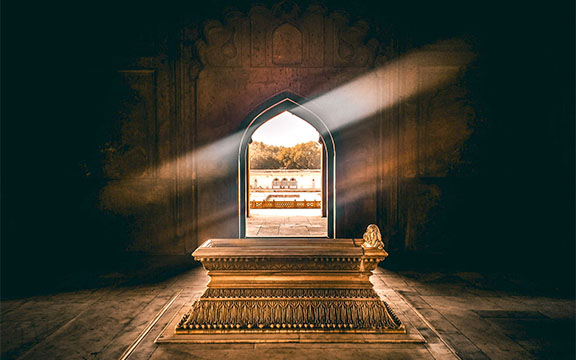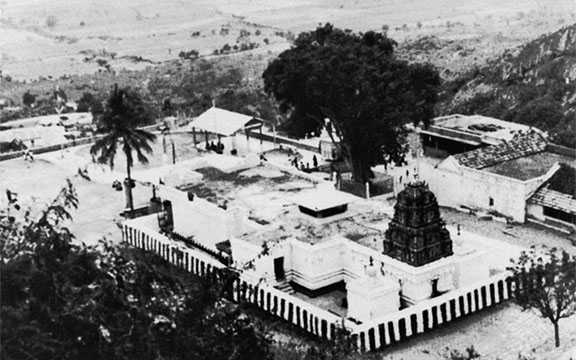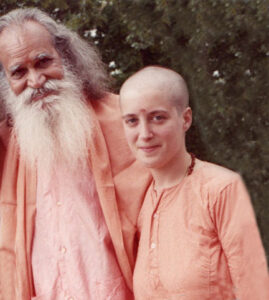
Photo by Jeswin Thomas via Pexels.
It is said that a journey of a thousand miles begins with a single step, but what if that journey encompasses not only miles but also centuries of profound wisdom, timeless traditions, and a tapestry of influences that have shaped our spiritual heritage? In this captivating new series, we invite you to embark on an extraordinary voyage, a quest that will take you far beyond the limitations of space and time.
Over the coming months, we will delve into the very essence of our tradition, tracing its origins and uncovering the countless influences and inspirations that have molded it into what it is today. As we embark on this odyssey, we will navigate through the annals of history, guided by the wisdom of sages, mystics, and scholars who have devoted their lives to understanding the mysteries of existence. We will unveil the hidden threads that connect diverse cultures, religions, and philosophies, revealing the profound interplay of ideas that has enriched our spiritual heritage.
From the sacred Vedic and Tamil Saiva texts to the rituals and practices passed down through generations to our founder’s modern applications that continue to keep our tradition relevant and profoundly impactful, we will leave no stone unturned in our quest for understanding our spiritual heritage. Each installment of this series will be a stepping stone on our journey, shedding light on different aspects of our tradition and the remarkable sages who left their indelible mark on Swami Satchidananda.
Join us as we embark on this expedition through time, where every article will be a glimpse into the past, a reflection of the present, and a glimpse of what the future might hold. Together, we will traverse the spiritual landscape, forging a deeper connection to our roots and an enriched appreciation for the wisdom that has guided our tradition. Prepare to be inspired, enlightened, and enriched as we set sail on this journey, tracing our spiritual tradition from its earliest beginnings, influences, and inspiration. Welcome aboard; the voyage begins here.
PART ONE:
Among the shrines, green hills and waters of the South Indian rivers lived a poet-devotee, Kuttiappa. At the age of fifteen, Kuttiappa lost his sight to the extent that he could see shapes and shadows during the day but nothing after the sun went down. To compensate for his loss, he developed his intellect in the study and creation of literature and in the science of mathematics.

Photo: Marudamalai Temple.
With his nephew, he traveled to the temple of Lord Muruga in Marudamalai. Unaware of the presence of the visitors, the temple priest locked the two within the shrine when he left at day’s end. Kuttiappa sat motionless in meditation, unaware of the priest’s departure. Sometime during the night, he felt very hungry. He called on the Lord to provide food for him. As he finished his prayer, the temple priest entered, instructing Kuttiappa to take the food, which was kept as an offering to the deity, from the temple kitchen. The nephew ran and brought rice and water. After his meal, Kuttiappa went back to his meditation. When the priest opened the shrine the next morning, and saw the man and his nephew sitting in meditation, he ran over.
“I am so sorry. When I locked up, I didn’t know anyone was left inside. You must be starving. Let me give you something to eat.”
Kuttiappa slowly looked up. “You must be teasing me. Last night you yourself instructed me to take the prasad from the kitchen. You even unlocked the kitchen so that we could have these dishes.”
The priest examined the dishes in amazement. “I locked these in the kitchen before I left. This is the play of Lord Muruga. He was the one who fed you during the night.”
Kuttiappa continued to meditate. He thanked the Lord for this manifestation. Then he concentrated on his condition of blindness, seeking its cause. During the meditation, he was instructed to go to the shrine of Nataraja (the dancing Siva) in Thiru Perur. There he allowed himself to be buried in an underground pit, remaining in the superconscious state of samadhi for forty-eight days. He envisioned himself in a previous birth as a Brahmin priest in charge of keeping the lamps of the village temple lit. Instead, he had stolen the butter for these lamps. The eyes of the temple grew dim; and, in this later incarnation, so had his own.
For the rest of his life as Kuttiappa, the devotee meditated upon and served Lord Muruga.
Six generations later, in the twentieth century, Kuttiappa’s descendants—Sri La Sri Ramananda Swamigal and Kandaswami Swamigal, his chief disciple—established their Kaumara Madalayam (a spiritual center and temple for the devotees of Lord Muruga) near Coimbatore, South India. Fifteen miles away in Chettipalayam was the household of their devotees and cousins—Sri Kalyanasundaram Gounder and his wife Srimati Velammai, the parents of Sri Swami Satchidananda.
Looking ahead: The Perur Temple as well as Palani will place a significant role in tracing our spiritual roots… Part 2 here.
About the Author:
 Swami Premananda, Ph.D. is a senior disciple of Sri Gurudev Swami Satchidananda and served as his personal and traveling assistant for 24 years. Her interest in the study of the spiritual roots of the Integral Yoga tradition and lineage was inspired over many years of traveling with Sri Gurudev to the various sacred sites throughout India that are a part of this tradition. She also undertook a 2-year immersion into the nondual Saiva Yoga Siddhar tradition that is at the heart of Sri Gurudev’s spiritual roots. She further studied the history, sacred texts, and teachings of Tamil Saivism including the Siddhars, bhakti poet saints, as well as the spiritual luminaries who lived in the 19th – 20th centuries and who inspired Sri Gurudev, such as Sri Ramana Maharshi, Swami Ramdas, and Swami Vivekananda. She serves as editor of Integral Yoga Magazine, Integral Yoga Publications; senior archivist for Integral Yoga Archives; and director of the Office of Sri Gurudev and His Legacy.
Swami Premananda, Ph.D. is a senior disciple of Sri Gurudev Swami Satchidananda and served as his personal and traveling assistant for 24 years. Her interest in the study of the spiritual roots of the Integral Yoga tradition and lineage was inspired over many years of traveling with Sri Gurudev to the various sacred sites throughout India that are a part of this tradition. She also undertook a 2-year immersion into the nondual Saiva Yoga Siddhar tradition that is at the heart of Sri Gurudev’s spiritual roots. She further studied the history, sacred texts, and teachings of Tamil Saivism including the Siddhars, bhakti poet saints, as well as the spiritual luminaries who lived in the 19th – 20th centuries and who inspired Sri Gurudev, such as Sri Ramana Maharshi, Swami Ramdas, and Swami Vivekananda. She serves as editor of Integral Yoga Magazine, Integral Yoga Publications; senior archivist for Integral Yoga Archives; and director of the Office of Sri Gurudev and His Legacy.
[Story of Sri Kutiappa excerpted from Sri Swami Satchidananda: Apostle of Peace]

